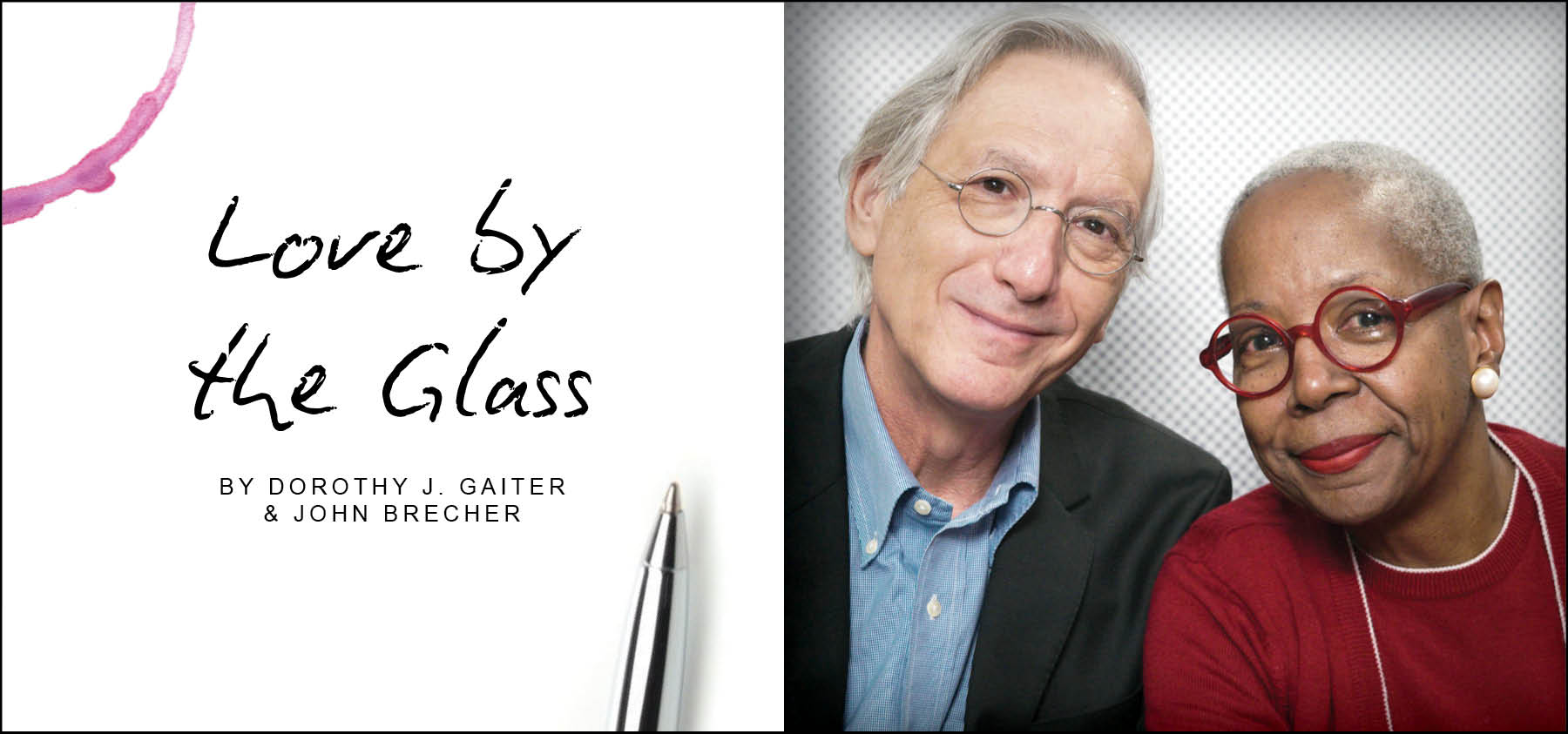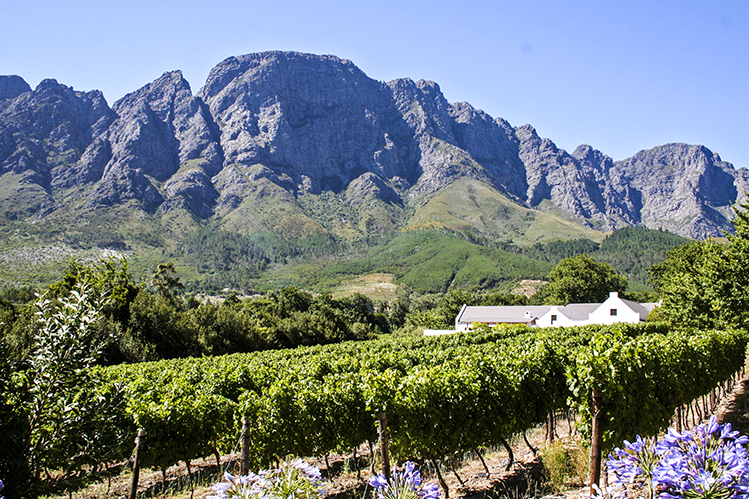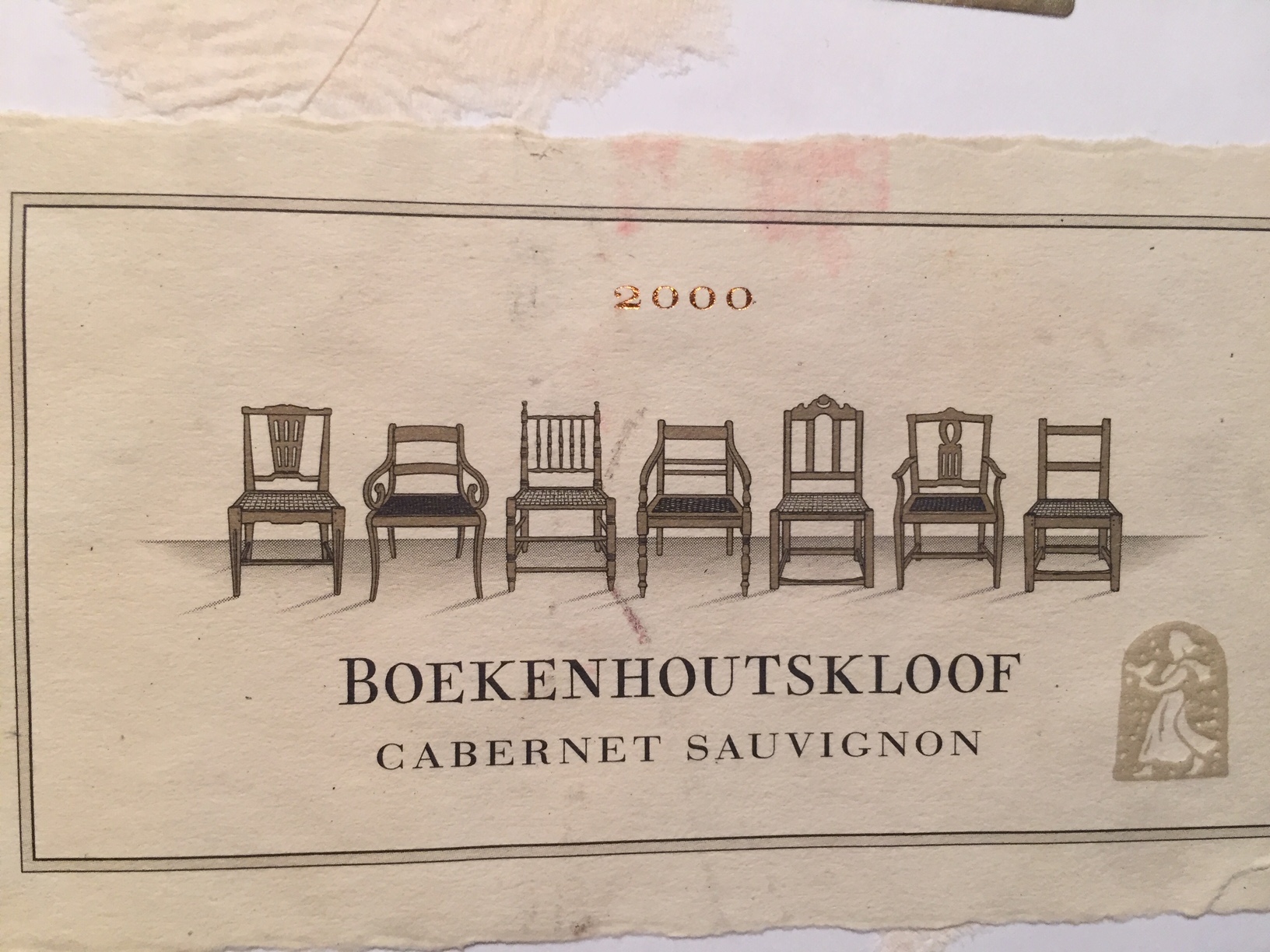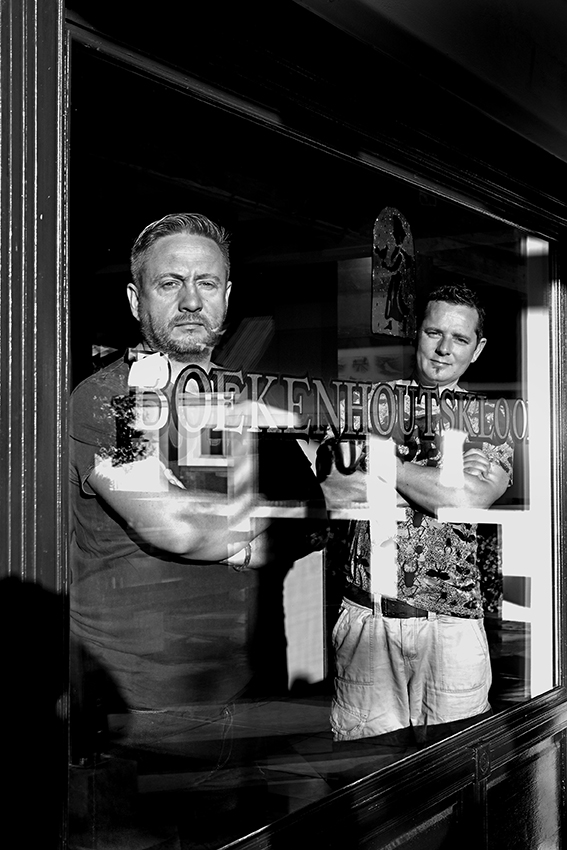
 When it comes to wine, your New Year’s resolution should always be the same: Try new things, even an upscale Cabernet Sauvignon from South Africa with a really long name.
When it comes to wine, your New Year’s resolution should always be the same: Try new things, even an upscale Cabernet Sauvignon from South Africa with a really long name.
We’d guess many people think of South Africa as a source of pleasant, inexpensive wines, especially Sauvignon Blanc, rosé and some sparklers. But this is a historic wine region that also produces wine you will never forget made by passionate vintners like Marc Kent who told us: “We say at Boekenhoutskloof, ‘the quality lies in the second half of the bottle.’”
(Boekenhoutskloof winery)
In some cases, a discussion of the wines of South Africa begins and ends with a debate over the merits of Pinotage, its unique contribution to the world of wine. A cross between Pinot Noir and Cinsault, it tends to evoke exceedingly strong feelings, especially among people who dislike it. Taste is personal, but viewing the wines of South Africa primarily through the lens of Pinotage is unfortunate for at least a couple of reasons. First, this is a time of tremendous uncertainty for the country’s wine industry and every bit of support helps. As we have written, this also is true of other regions. And second, a myopic view of the industry misses the reality that South Africa also produces head-banging wines and, in our case, a wine that takes us on an 18-year-journey from Florida to New York.
In 2003, we were in Sarasota, Fla., for a speaking engagement and, as payoff to the kids, to visit both Universal and Disney World. A block from our hotel was a restaurant called the Bijou Café, so we dropped in. It turned out that the owners were South African and the wine list was heavily South African. (Important tip for selecting a wine at a restaurant: Go with the place’s passion.) We chose something we’d never had, a 2000 Cabernet Sauvignon from Boekenhoutskloof winery, from the Franschhoek region, now widely regarded as the country’s food and wine capital. It was $68. We likely pointed to it on the list instead of even trying to pronounce it.
It was astonishing. We wrote of it: “Like a big, well-made and expensive Napa Valley red, but with lots of pepper on the nose. Intense, pure fruit, a little earthy. Doesn’t taste alcoholic for such a big-fruited wine. Huge but not hard to drink. Cedar, eucalyptus. Incredible fruit but not sweet fruit, perfect with Dottie's super-rare steak.”
 We remember that wine and the entire experience like it was yesterday. And, as it happens, the importer of that wine, Vineyard Brands, recently sent us the 2016 vintage, which now costs about $69 in stores. We were curious about it, but also worried it couldn’t live up to our memories. It did.
We remember that wine and the entire experience like it was yesterday. And, as it happens, the importer of that wine, Vineyard Brands, recently sent us the 2016 vintage, which now costs about $69 in stores. We were curious about it, but also worried it couldn’t live up to our memories. It did.
(The 2000 from Bijou Café in Sarasota, Fla., in 2003)
We were wild about it. Our tasting notes were surprisingly similar, 16 vintages and 18 years apart. Even before we looked up our previous notes, Dottie said she suddenly really craved the steak tartare at Cozy Royale in Brooklyn or Joe Allen in the Theater District. The soulful angularity of it called to her. “The combination of elegance and power is extraordinary and reminds us of some terrific Super Tuscans,” we wrote. “There’s no fat here. It’s just pure fruit. Explosive. Every sip grips your mouth and then explodes inside. Everything is in balance -- not too much acidity, oak or anything else, and even the tannins are smooth enough to make this a whole. Focused and pure.”
Then we looked at the winery’s website, where the technical sheet included this: “We opted for gentle vinification to avoid huge, monstrous wines.” This was getting more and more interesting. It was time to reach out to Marc Kent.
Kent is technical director and CEO for Boekenhoutskloof (pronounced something like Book-n-Howed-Skloof). He joined the now celebrated winery as winemaker-viticulturist a year after he and partners bought the historic property in 1993. Now 51, he has overseen a large expansion. Boekenhoutskloof, which is best-known for its Syrah and its Chocolate Block, a blend of Syrah, Grenache, Cinsault, Cabernet Sauvignon and Viognier, also includes other labels, such as the value-brand Porcupine Ridge, which, yep, does have a porcupine on its label. Including all of the brands, Boekenhoutskloof produces about a half-million cases. Of that, 7,000 cases are the Boekenhoutskloof brand and, of that, about 1,000 cases are the Franschhoek Cabernet. The 2016 has 6 per cent Cabernet Franc.
The winemaker at Boekenhoutskloof since 2015 has been Gottfried Mocke, who noted British wine writer and Master of Wine Tim Atkin named South Africa’s Winemaker of the Year in 2020. That same year, Platter’s South African Wine Guide’s “Editor’s Award for Winery of the Year ” went to Boekenhoutskloof. Kent made the 2000 we loved and he still oversees everything, including the blending, an art that has earned him near iconic status in the industry.
So, we asked Kent by email about his vision of this wine, which has remained true all the way from our 2000 vintage to our 2016. “I have attempted to make wines in a classic European mold with a distinctly New World touch, a combination of elegance and power. No acidification, so generally higher pH’s than one would expect from SA. Oaking is also integral to the success of our Cabernet(s) and only ‘chateau’ barriques from (predominantly) Sylvain cooperage.
“All the wines that are vinified in our Franschhoek facility are vinified in concrete, from Nico Velo in Italy; no crushing after de-stemming, using the best in selection technology, and we only use peristaltic pumps at the winery, as we have from day one. The Cabernet is aged in 225 litre barriques, while our Syrah is aged in 2,500 litre foudres from Austria. Most importantly, our move towards better vineyard practices and more sustainable (and in the case of our own vineyards, organic) viticulture allows better fruit into the winery which is ultimately manifest in the quality in the bottle.”
And he added “the quality lies in the second half of the bottle,” which, to us, means it’s easy to enjoy from the outset, but remains interesting – and maybe even more interesting – as you drink it. That’s more unusual than it should be. These days, too many wines are good for the first glass, but they lose our interest after that. These did not.
 Wineries all over the world have been pummeled by climatic disasters and Covid. As South Africa has continued for decades to grapple with historic social and economic inequities, better treatment of winery workers has been prioritized. Still, the wine industry has been hard hit with droughts, periodic anti-drinking campaigns, and then the pandemic, which led the government to ban sales of alcoholic beverages several times, with new worries that another ban is coming soon. The government says the bans are intended to stem the flow of people with alcohol related injuries to hospitals, thereby freeing up medical care for Covid cases. All of this has also hurt the hospitality industry and the wine tourism industry, which create thousands of jobs.
Wineries all over the world have been pummeled by climatic disasters and Covid. As South Africa has continued for decades to grapple with historic social and economic inequities, better treatment of winery workers has been prioritized. Still, the wine industry has been hard hit with droughts, periodic anti-drinking campaigns, and then the pandemic, which led the government to ban sales of alcoholic beverages several times, with new worries that another ban is coming soon. The government says the bans are intended to stem the flow of people with alcohol related injuries to hospitals, thereby freeing up medical care for Covid cases. All of this has also hurt the hospitality industry and the wine tourism industry, which create thousands of jobs.
(Marc Kent (left) with winemaker Gottfried Mocke)
Wineries that focus on the domestic market have suffered more than those that mostly export and Kent said Boekenhoutskloof, which is well-regarded and large, is doing fine. He added, though: “For the industry it has been tough -- restrictions on alcohol sales have made already difficult times even tougher.”
Jim Clarke, marketing manager for Wines of South Africa USA and author of “The Wines of South Africa,” said the industry was just beginning to recover from the drought when Covid hit. He gave us this overview of a market that really is two markets, based on government reports showing the industry struggling over the past several years:
“Grape farming is really having trouble making a profit. One estimate says about 50% of grape farms are breaking even at best. This and the drought accounts for the shrinking vineyard footprint over the past decade. A large portion of South African grapes still go into co-op wines that are sold in bulk at too low a price.
“So estates and branded wine companies are not necessarily doing that badly, and there’s not much in these trends that’s relevant to a winery like Boekenhoutskloof. Really these big numbers have much more to do with the bulk market and wines that sell at the $10-and-under range. Obviously, we all want a healthy industry at every level, but the trends you’re seeing are not really primary issues for almost every South African brand you’ll see here in the U.S.”
In fact, Clarke said, “the latest Gomberg-Fredrikson Imports report showed South African packaged wine (i.e. exported here in bottle) up 18% YTD through October -- the only major New World country showing positive numbers for the year.”
Kent put it this way: “As a nation, we are resilient, and we remain positive and focused.”
So in 2022, go for it: Try a Pinotage from South Africa (Lievland is a good one, especially at about $19). Give Dry Riesling another try (we had a lovely Ravines from New York State the other day that was also $19). When was the last time you had a Petite Sirah that blew you away? Maybe it’s time to try one, perhaps from Theopolis or Clif Family from California. Cru Beaujolais is one of the world’s most versatile and unappreciated wines. Take a risk on an older white or a red that “should” be too old, though you’ll need a trusted wine store or restaurant to try this.
May your new year be filled with new adventures.
Dorothy J. Gaiter and John Brecher conceived and wrote The Wall Street Journal's wine column, "Tastings," from 1998 to 2010. Dorothy and John have been tasting and studying wine since 1973. In 2020, the University of California at Davis added their papers to the Warren Winiarski Wine Writers Collection in its library, which also includes the work of Hugh Johnson and Jancis Robinson. Dottie has had a distinguished career in journalism as a reporter, editor, columnist and editorial writer at The Miami Herald, The New York Times, and at The Journal. John was Page One Editor of The Journal, City Editor of The Miami Herald and a senior editor at Bloomberg News. They are well-known from their books and many television appearances, especially on Martha Stewart's show, and as the creators of the annual, international "Open That Bottle Night" celebration of wine and friendship. The first bottle they shared was André Cold Duck. They have two daughters.
Banner by Piers Parlett










